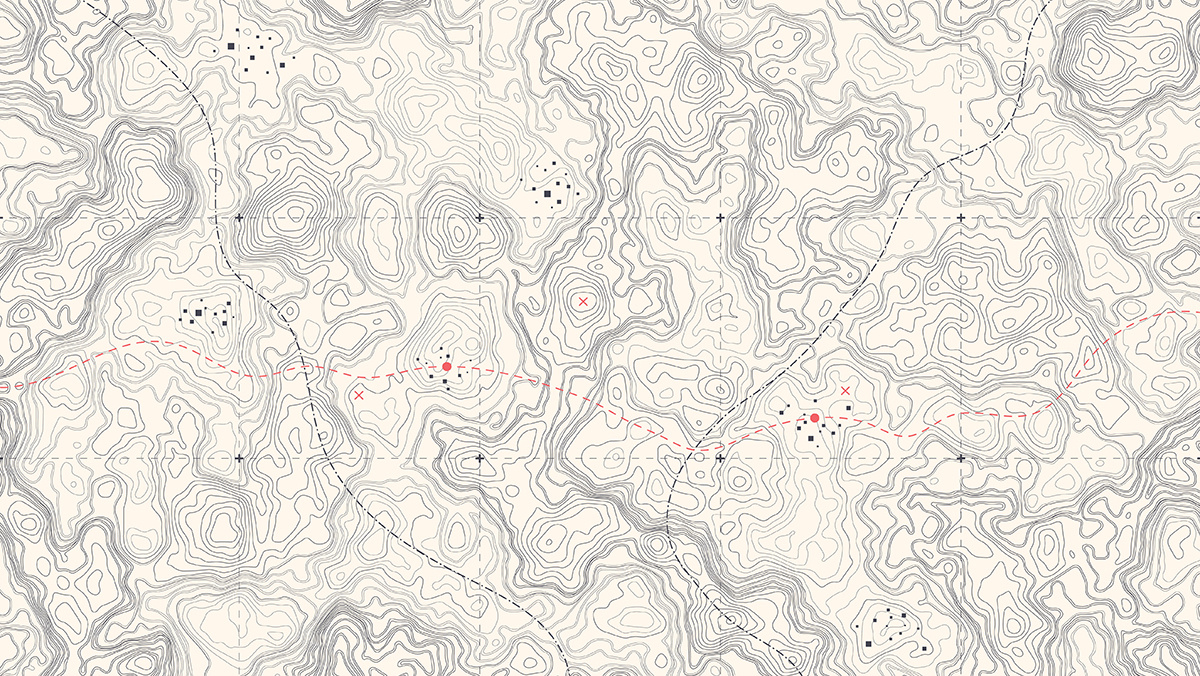Additional contributions to this article were provided by Ezri Carlebach and Olivia Asiedu-Ntow.
The Evolution of the Brand Consultant: Breaking the Chains of Corporate Addiction
By Gilmar Wendt

In the second article in this series on the evolution of brand consultants, we examine our collective addiction to growth and productivity. Grappling with the measurement monkey on our backs and the notion of ‘sustainable sustainability’, we find out why Marshall McLuhan said, “Successful enterprises, without exception, are clad in suitable, if not inspired, styles of resonance”, as we continue from logo fixer to strategic future-builder.
We live in a world obsessed with the ideology of growth.
“What do you think is the biggest PR crisis of the past decade?” asked Akshay Bansal, founder of AI development company Heuro, in a LinkedIn poll. The options were Nestlé’s Maggi noodles recall, the VW emissions scandal, Facebook’s nefarious dealings with Cambridge Analytica, and the BP Deepwater Horizon disaster. These were all indeed crises in the classic public relations sense, and proved more or less damaging to the brands involved. They are also outliers in terms of business behavior, certainly if you set the parameters of business beyond a few big corporations. But they are all symptomatic of the addiction to growth – an addiction which, if various government reports are to be believed, is one of three existential threats humanity is facing right now (the other two? AI and the climate crisis).
But let’s just focus on the brand element for a moment. The different reactions of each brand to its respective crisis demonstrates what Canadian contrarian and media critic Marshall McLuhan called a ‘style of resonance’. This isn’t the place to go into detail about McLuhan’s theories. Suffice to say, he was famous in the 1960s and ‘70s for sharing intriguing nuggets of insight buried in mystifying aphorisms. McLuhan’s main target, in public at least, was the impact of electronic technology on human life, particularly the production and consumption of media. He coined the term ‘prosumer’ in 1970 and almost single-handedly invented the discipline of media studies. The concept of ‘style of resonance’ – with its obvious correlation to ‘brand identity’ – comes from his 1972 book Take today; the executive as dropout, co-written with Barrington Nevitt (another classic case of engineer-turned-management-consultant).
As the title suggests, McLuhan played fast and loose with cultural modes, positing business leaders in a role associated by his contemporaries with hippies and stoners (the ‘woke’ of their day? Let’s not go there…). The book is deliberately fragmentary, often frustrating, yet peppered with sentences that have startling relevance for today’s business context. Although some only emerge after the third or fourth reading. Here’s a pertinent example, “People of promise, and promising enterprises, like promissory notes, have become inseparable from the promises of promotion.”
Got it? Sure you do. Professor McLuhan is merely pointing out that successful brands are created by ‘the promises of promotion’, and that they subsume the people and companies behind them, no matter how talented, popular, or rich they may be. Just ask Sam Bankman-Fried! It’s the same as the effect of a ‘promissory note’ – say, a $100 bill – on the issuing government. Hey, what you do with that pile of Franklins is up to you, pal, we’re not judging.
In the crazy, AI-written world of 2023 (Year Zero, according to the GPT zealots), we cast around for promissory notes to serve as proxies for the success of our business activities. How do we measure the effectiveness of that freemium app? The influence of a TikTok trash talk? The success of the C-suite’s latest ‘strategic transformation’ project? Let me guess. We don’t. And we feel the pain, because the measurement monkey is on our backs the whole time, whispering into our ears that we can’t manage what we don’t measure, digging its nasty little claws into our conscience at every budget meeting as we seek some solid measure of the ideology with which we’re all obsessed.
Growth. The room starts spinning, the music gets louder, everything feels out of control. Then, to our horror, in steps William Thomson. William is better known as Lord Kelvin, the guy who devised the scale for measuring absolute temperature. He was big on measurement. “When you can measure what you are speaking about, and express it in numbers,” he admonished a doubtless quivering crowd during a famous lecture, “you know something about it; but when you cannot measure it, when you cannot express it in numbers, your knowledge is of a meager and unsatisfactory kind.”
Meager and unsatisfactory knowledge, eh? No wonder it’s so hard to persuade C-suite types with engineering and accountancy backgrounds, and their management consulting chums, that the human-centric approach we take in design decision-making and the qualitative methods we use to measure brands are valid. But we know they are. We can feel it.
As human beings, we feel before we think. It is the feelings that we evoke in others that will bring customers to a place of loyalty or advocacy. When interacting with a brand, do they see themselves within that exposure to enhanced status, their ability to have agency or to belong?
In other words, we want our story to connect with them in a way that increases their motivation to engage in a value exchange of some kind (they buy something, sign up for something, ‘like’ something on social media, hand out a high Net Promoter score, and so on). So far so good. After all, our guru McLuhan told us 50 years ago that “profit as the criterion for ‘performance’ is now passé for running a complex business organization”. So, could ‘feeling’ be a criterion for measuring brand performance? Ryan Williams thinks so: “To measure these motivations, we then must measure feelings. It is within their feelings that we can predict the economic or missional value of their behaviours, be it direct sales or promotions or donations or changed behaviours.”
There is an urgently serious side to the need for measuring feelings in this way. It’s crucial to the evolution of brand consultants from logo fixers to strategic future-builders. It’s another thing McLuhan saw coming – the looming environmental catastrophe caused by the impact of human activity on the Earth’s climate. We live, McLuhan noted, on “planet eco-polluto”. As brand consultants we can, and must, take a greater part in the changing of behaviours Ryan refers to, if we’re going to have a planet to inhabit at all. A recent conversation with experience designer and entrepreneur Anja Klüver and sustainability expert Dan Gray highlighted a dilemma brand consultants often face; the need to make a ‘business case’ for sustainable practice in everything from the design stage to post-consumer disposal. Dan pretty much nailed it when he said, “What’s the business case for sustainability? I think the best answer is, I’d love to see the business case for the alternative.”
Anja offered a pragmatic response: “Inviting the planet to have a seat at the table as part of the design briefing process will soon become the norm, because we just cannot continue the way we’re going now. End of.” Remember our roll-call of brand PR disasters? Nestlé, VW, Facebook, BP, they resulted in a mix of environmental and social problems, but the point is how different things might have been with ‘the planet’ at the table when the seriously bad decisions that caused those crises were made (and, of course, how much better for their bottom line in the long term). Of course, Anja really means we need people at the table to speak up for the planet. Why can’t brand consultants be those people? We can flex our measurement muscles, with a little help from the likes of Hal Harvey, President of Climate Imperative. “It is now cheaper to save the Earth than to ruin it”, as he drily observed.
Above all, we need the courage to stand up and say, “I’m a brand consultant and I’m addicted to growth”.
Then we can be part of the collective 12-step programme, together with clients, consumers, regulators, policy makers, etc., that will help us pull the planet out of its current death spiral. To get us started, here’s a suggestion for a 3-step programme; 3 Rs, if you like, for the next stage of our evolution as brand consultants:
Resonance: When we think about brand in our day-to-day work, we tend to think of it purely as brand (brand quabrand, as our friends in academia would say). Let’s channel our inner McLuhan and call it ‘style of resonance’, and let’s aim to make it ‘inspired’. If nothing else, it’s a pleasingly poetic way of conjuring up the consequences that inevitably follow those ‘promises of promotion’. If the consequences are harmful to people or planet, we have to speak up – louder, and sooner.
Relationships: Measurement is important, of course, but obviously not an end in itself. Let’s not shy away from feelings. Be measured in your relationships, not obsessed with measuring them. Heck, we should even be able to talk about love in the business world without being ashamed (or creepy). And that doesn’t mean love for brands – but for humanity.
Returns: We need a circular economy, not the circuitous talk about it that goes on at the moment. Sustainable sustainability. We know what it looks like, we know a lot, if not quite everything, about how it works, we know it means weaning ourselves off growth, and we also know it does not mean impoverishing ourselves or denying anyone the chance of a decent life. On the contrary. But we need to make it happen – and fast.
See how much you can do with this. If you have children, ask for their opinions. If you work with people much younger, or much older than you, ask them.
The third and final part of our look at the evolution of brand consultants will consider how we might handle the resulting range of values, attitudes, temperaments, and tech abilities that come with the differing life experiences of multiple generational demographics working together. We’ll try to figure out how to find and keep the brightest and best talent at the same time as we grasp the nettle and slow, or even stop, our growth obsession.
This article was first published on Brandingmag.com.
Cover image source: yamonstro
Gilmar Wendt is the Founder and Principal of GW+Co.
Contact him on gw@gilmarwendt.com @gilmarwendt

